The great Russian commanders created the glory of Russian weapons on land, in the air and at sea. Peter I planned the development of the country as a sea power, laying the first shipyards and attracting foreign engineers. His labors enabled Russia to win many high-profile victories at sea. Ushakov, Nakhimov are the first naval commanders our country can be proud of. In the USSR, Admiral Kuznetsov became the successor of their victories, his life was inextricably linked with the naval forces.
Biography
In the opinion of Nikolai Gerasimovich Kuznetsov himself, the experience of controlling a ship is not given immediately, it must be gained by going from a sailor. That is how the fast-paced career of a young guy from the village of Medvedka in the Astrakhan region began. The future Admiral Kuznetsov joined the Navy at the age of 15, adding two years to his age, he volunteered for the Civil War. In 1919, he fought as a sailor on a ship of the North Dvina Flotilla. After graduating from the naval school, and then the academy with honors, Kuznetsov goes to serve in the Black Sea Fleet. The cruiser Chervona Ukraine became for him the school of a sailor, which began with the post of commander. Since 1933, he became the commander of a cruiser, over the next five years of service, the ship is noted as exemplary in military training, discipline, and shooting performance. In the fleet, they started talking about the creation of the Kuznetsov system, which became the methodology for military training of ships in all fleets of the USSR. The youngest captain of the first rank in 1935 was awarded the Order of the Red Star. During his service on the cruiser, Kuznetsov is developing new tactical methods for naval combat, he is aware of the importance of aviation reconnaissance. In his theoretical calculations, it is said that the interaction of all types of troops should give high results during military operations. The most important role in it was given to aviation. In the future, this theory was not only confirmed, but also, thanks to Kuznetsov, saved many lives by making a tangible contribution to the victory of the USSR on the fronts of World War II.
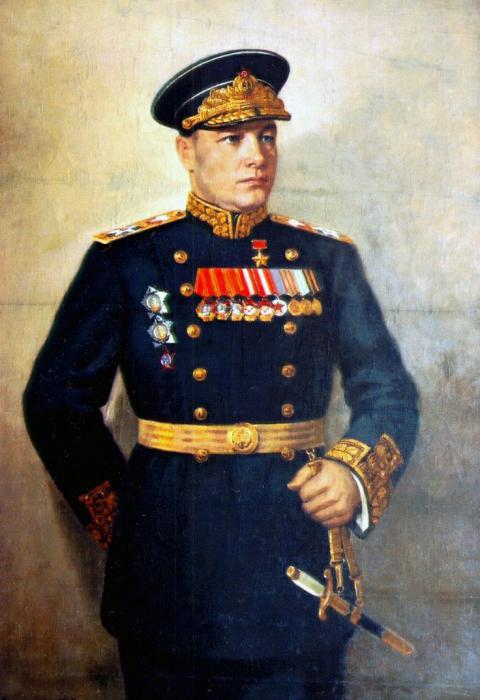
Spain
In 1936, the tasks of volunteer sailors in the fight against fascism were the timely delivery and unloading of aid received from the USSR. Kuznetsov, as a naval attache in Spain, in practice is convinced of the correctness of his theory. Enemy aircraft drowned transport ships on the approaches to the ports, their actions significantly complicated the unloading, which reflected on the effectiveness of military operations. Kuznetsov creates a new type of troops - naval aviation, which is based in the port area and repels the attacks of enemy fighters. For this work he is awarded the orders of the Red Banner and Lenin. Returning from Spain in 1937, Kuznetsov was appointed first deputy and then commander in chief of the Pacific Fleet. The basic rule that he took out of the fighting in Spain is the constant readiness of each ship and fleet as a whole.
Before the war
In the 1930s, the USSR began creating a new, more powerful fleet, which was destroyed during the Russo-Japanese War of 1904. Future Admiral Kuznetsov in 1937 is part of the command staff of the Main Military Council of the Navy, which is created under the People’s Commissariat. At 34, he becomes the youngest People's Commissar of the Navy. Under his command were young, not too experienced, but seeking to double the glory of Russian weapons officers. Kuznetsov reported directly to Stalin, which greatly complicated his work. The commander in chief was going to build a new fleet of large ships - battleships, cruisers. Kuznetsov, on the contrary, insisted on the release of ships of various classes, including aircraft carriers. He proved to the leader the need to create coastal aviation capable of conducting quick reconnaissance and ensuring the safe movement of ships. Kuznetsov assigned an important role to the training of personnel, combat situations were regularly worked out in the active forces, and the readiness of each ship for a surprise attack. Between 1938 and 1948, many educational institutions were opened to create qualified naval officers and sailors. Kuznetsov personally visited each ship, monitored compliance with ship and disciplinary regulations, evaluated the actions of ships in exercises. By the time the war began, despite disagreements with Stalin, the young commissar had achieved many of his plans and created a new battle-worthy Soviet fleet.
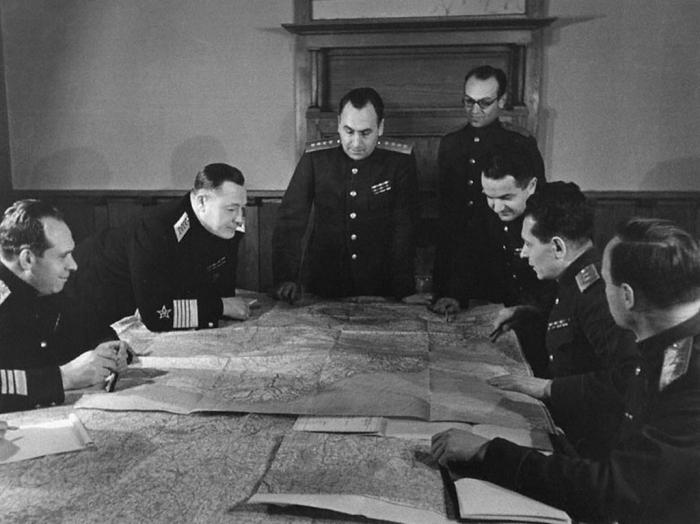
The Great Patriotic War
TASS reports, refuting the possibility of a German attack on the USSR, became a signal for action for Kuznetsov. The ships were equipped with fuel reserves, a complete inventory of the material part and ammunition was carried out, the patrols and reconnaissance were strengthened. Since May 1941, the personnel were prohibited from being fired on shore, while the political training of the fighters was strengthened. The fleet met the beginning of fascist aggression in full combat readiness, which allowed avoiding losses. The plan of protective measures created before the war was unfolding on the orders of Kuznetsov without the direct intervention of the Commander-in-Chief. Mines were erected, submarines were deployed, enemy aircraft were destroyed on the way to fleet-based locations. On June 24, a threat of blocking arose over the ships of the Baltic Navy; on the orders of Kuznetsov, he broke into Kronstadt, leaving Tallinn. Naval artillery significantly helped in the defense of Leningrad and its liberation from the blockade. Sailors participated in land operations, helping to restrain the fascist armada. The bombers of the Baltic Fleet in August 1941 launched several massive attacks on Berlin, they did not cause significant harm to the German capital, but raised the morale of our troops. Since 1944, by order of the Commander-in-Chief Kuznetsov N.G. - Admiral of the Fleet, this title was assigned for the first time and was equated with the Marshal.
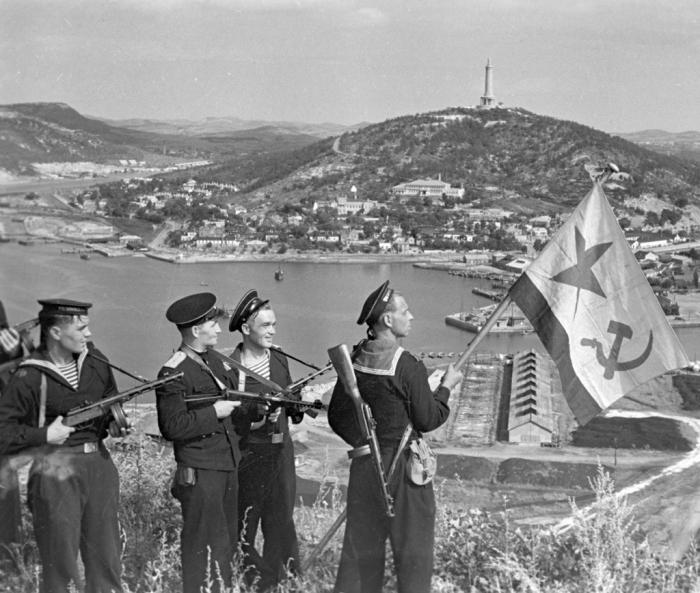
Result
Active military operations of the Soviet fleet led to heavy losses from the enemy. Fleet Admiral N.G. Kuznetsov personally developed all ongoing operations, which were then approved by the Commander-in-Chief, acted in constant consolidation with other branches of the army. Ships, submarines during the war destroyed 1200 units (transport, security) of the enemy. Naval aviation in battles and at airfields crashed more than 5,000 German aircraft. At the same time, the forces of the Northern Fleet guarded and transported goods from allied states. Hundreds of thousands of people were taken out of the besieged Leningrad along the way of life, more than 10 tons of cargo were delivered to the starving city. Over 200 enemy ships were destroyed on minefields. Fleet Admiral Kuznetsov was awarded the orders of Ushakov, 1st degree, Red Banner and Lenin. More than 70 ships were awarded the Guards title, 513 sailors became Heroes of the Soviet Union. As Commander-in-Chief of the Navy, Admiral of the Soviet Union Kuznetsov participated in international conferences, negotiations and meetings with allies.
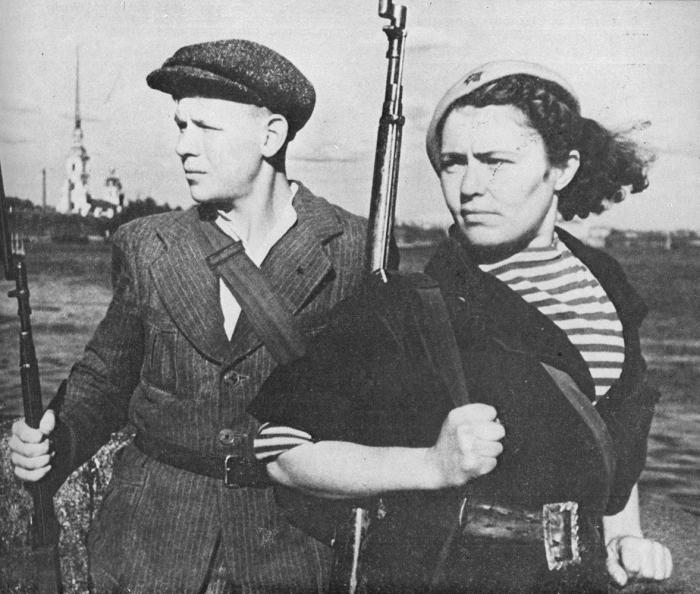
After the war
The main task of peacetime was the restoration of the fleet. Shipbuilding projects (including aircraft carriers) and the development of the naval forces were presented to Stalin personally by the People's Commissar. N.G. Kuznetsov, the admiral, who became famous during the war years, insisted on his plans and requirements, which often diverged from the opinion of the leader. Due to these disagreements and confidence in his innocence, in 1948 Kuznetsov was demoted to the rank of rear admiral and almost sat down in the dock. He spent six months without service, suffered a heart attack, but was able to start working as deputy commander in chief of the Navy of the Far East. It was there that he received the next rank of Vice Admiral for the second time. In 1951, by personal order of Stalin, he returned to Moscow and was completely rehabilitated. Admiral N. Kuznetsov receives the next rank in 1953, he is actively involved in the work and is seeking a revision of the shipbuilding program.
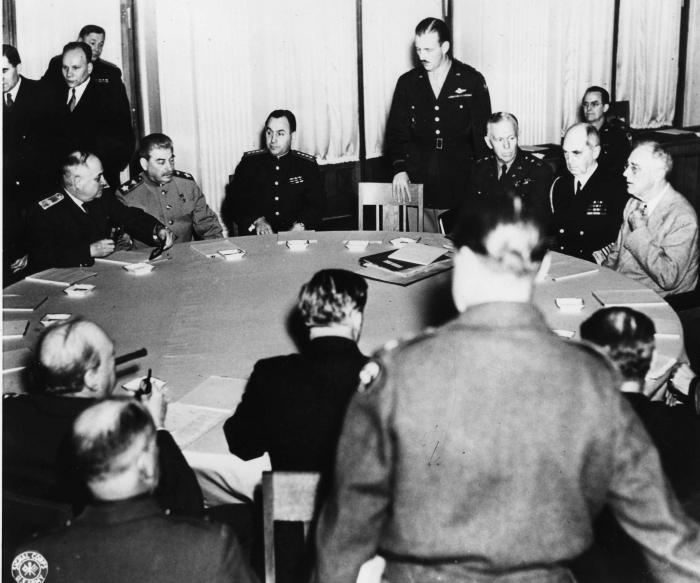
Thrice admiral
The further fate of Nikolai Gerasimovich is connected with the transformation of the fleet, his close cooperation with the relevant departments and the Academy of Sciences of the USSR made it possible to create nuclear submarines. He attached great importance to equipping ships with missiles. They were deployed in submarines and surface transport. The idea of creating aircraft carriers did not find its embodiment until 1972, when this need was dictated by the conditions of the Cold War with America. Kuznetsov's perseverance helped advance the fleet's modernization program, but it exacerbated his relationship with the ruling elite. Under Khrushchev, Admiral N. Kuznetsov was once again demoted. His illness allowed him to be removed from the post of commander in chief of the Navy and actually removed from the business to which he gave his whole life. But the fruits of his labors yielded results - the aircraft carrier Admiral Kuznetsov was built. Retired Kuznetsov wrote a lot about the fleet, translated foreign literature and evaluated his victories and defeats. He died on December 6, 1974, was buried in the Novodevichy cemetery in Moscow. For the third time, Kuznetsov became admiral of the fleet after his death, this title was returned to him in 1988 under pressure from colleagues and the family of Nikolai Gerasimovich.
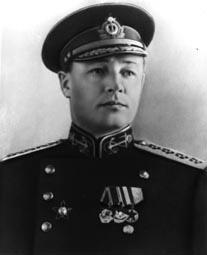
Admiral Kuznetsov Aircraft Carrier
In 1982, the fifth heavy cruiser was laid on the slipway of the Black Sea Shipbuilding Plant. His deck was designed for basing, landing and take-off aircraft such as SU and MiG. From the moment the ship was laid to the end of all types of tests, it had four names: "Riga", "Leonid Brezhnev", "Tbilisi". And only in 1990 the ship began to bear the name "Admiral of the Fleet of the Soviet Union Kuznetsov." The ship was launched in 1985, and it continued to be built, equipped and equipped afloat. In 1989, a crew climbed aboard, and the pilots began testing the runway’s landing characteristics. Su-25, Su-27, MiG 29 successfully coped with the tasks, after which the ship was transferred to the dock for completion.
Equipment
Admiral Kuznetsov’s aircraft carrier underwent several reconstructions. Its radar, navigation, and electronic weapons must be constantly modernized. A ship of this size and class is very difficult to convert and expensive enough to keep on alert, but until today it is in service, it is on duty as part of the forces of the Northern Fleet. Its displacement (maximum) is 61 tons, length - 306 m, width - 71 meters. Overall height - 65 meters, maximum draft - 10 m. Four five-blade propellers are used as propulsors, which are driven by diesel generators (6), steam turbines (4) and turbogenerators (9). The armament consists of Granite, Dagger, Dagger, AK-630 anti-aircraft artillery, RBU anti-submarine bombs. The basic aviation group includes fifty aircraft and helicopters.
Development
To date, the aircraft carrier Admiral Kuznetsov is the largest ship of this type. Its analogs are not produced, the long-term plans of the Navy in this direction are secret. But the leadership of the modern Russian fleet recognizes the fact that the development project created by N. G. Kuznetsov 50 years ago remains relevant at present. It is possible that soon new aircraft carriers will be laid at modern shipyards, which will more fully meet modern requirements. This applies to both weapons and ship engines. New sea vessels under the command of young naval commanders will conquer the expanses of the ocean and show the world the power of Russian weapons, but you should not forget about the people who wrote the first pages of this book.